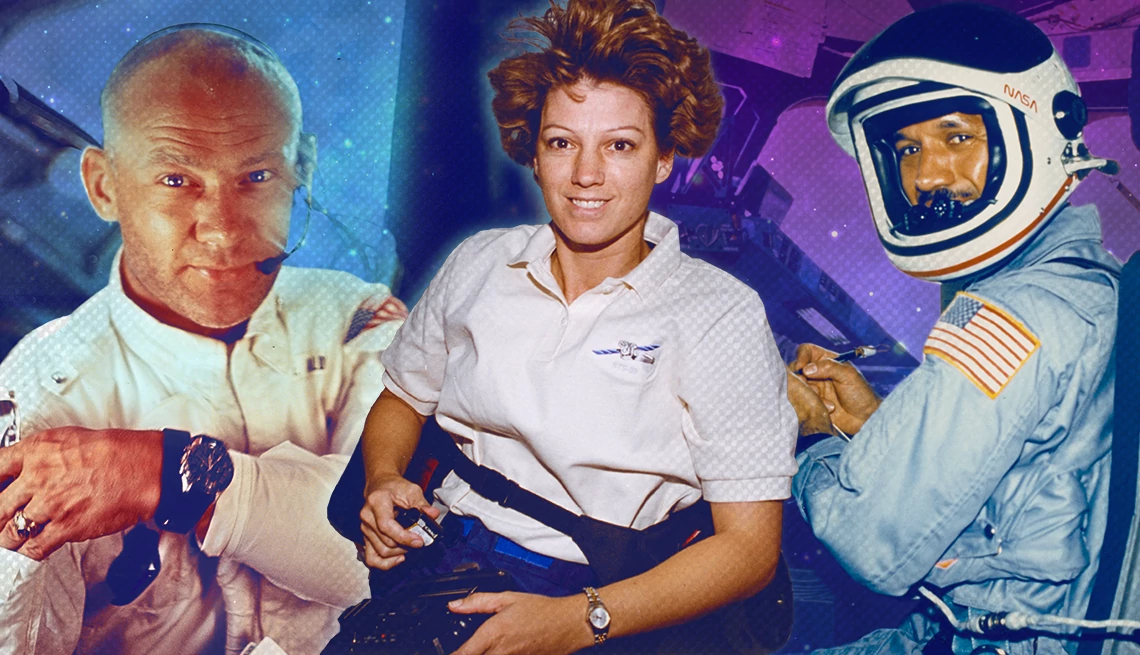
- Select a language for the TTS:
- UK English Female
- UK English Male
- US English Female
- US English Male
- Australian Female
- Australian Male
- Language selected: (auto detect) - EN
Play all audios:
Astronauts are a select group, chosen for intelligence, fitness and motivation. They are also, largely, living much longer than the rest of us. A 2017 study found that male astronauts lived
about seven and a half years longer than the general population, while female astronauts lived five years longer. The most famous space crew of all featured Apollo 11 commander Neil
Armstrong, who lived to be 82; Michael Collins, who went on to serve as an Assistant Secretary of State and the director of the National Air and Space Museum before dying peacefully at 90;
and Buzz Aldrin, still vigorous and cantankerous at 94. Of the twelve humans who have walked on the moon, four are still alive. Their average age: 91. Aldrin has urged NASA to speed up its
upcoming missions by posting social-media photos of himself in a T-shirt reading GET YOUR ASS TO MARS. “You may get older chronologically, but you don’t have to grow an old-person
mentality,” he wrote in his 2016 book, _No Dream Is Too High_. Long work lives are also not uncommon among astronauts: Charles Bolden, now 77, was 62 when he stepped into the executive
suite; he ran NASA from 2009 to 2017. Why do so many astronauts seem to live long and prosper? Robert Reynolds, who compared 60 years of data on astronauts’ health and longevity to that of
professional athletes, suggests “that cardiovascular fitness in particular is the most important factor in astronaut longevity.” But it turns out that’s only one factor. Interviews with
astronauts and other experts turned up several more rules to live by if you want to age like a spaceman: 1. BE OPEN TO FAILURE If taking a new project or late-life job sounds daunting,
imagine being one of the astronauts who pioneered the Mercury program in the 1950s and ’60s. They volunteered for hazardous duty at a time when no human had ever flown into space. As John
Glenn remembered, “We didn’t know if our eyes would pop out of our heads!” Glenn was 40 when he became the first American to orbit Earth, and 77 when he returned to fly on the space shuttle
Discovery in 1998. He served as a U.S. Senator from Ohio and lived to be 95. Astronaut Eileen Collins, 67, was the first woman to command a U.S. space mission when she served as commander of
the shuttle Columbia in 1999. As Collins has said of astronauts, “We want to explore. We’re curious people.” Aldrin, who will turn 95 next year, has a motto that expresses his brand of
upbeat fearlessness: “Failure is always an option.” 2. STAY FIT Want cardiovascular fitness? Some current and former astronauts are triathletes. Many work out at NASA’s state-of-the-art
fitness center in Building 26 at the Johnson Space Center in Houston, striving for what the agency calls “superfitness.” Glenn, who served as a director of the American Federation for Aging
Research, kept up a rigorous fitness program into his nineties. Current and former astronauts do the same — not only to help stave off osteoporosis and other physical maladies, but to
increase their chances of preventing or delaying Alzheimer’s and other types of dementia. “It’s important to remember that the brain is part of the body,” says Saralyn Mark, M.D., a former
advisor to NASA, the U.S. Department of Health and Human Services and the White House who helped oversee NASA’s medical program. “We're all aging all the time," she said, but
physical activity can help our brains as well as our bodies.







